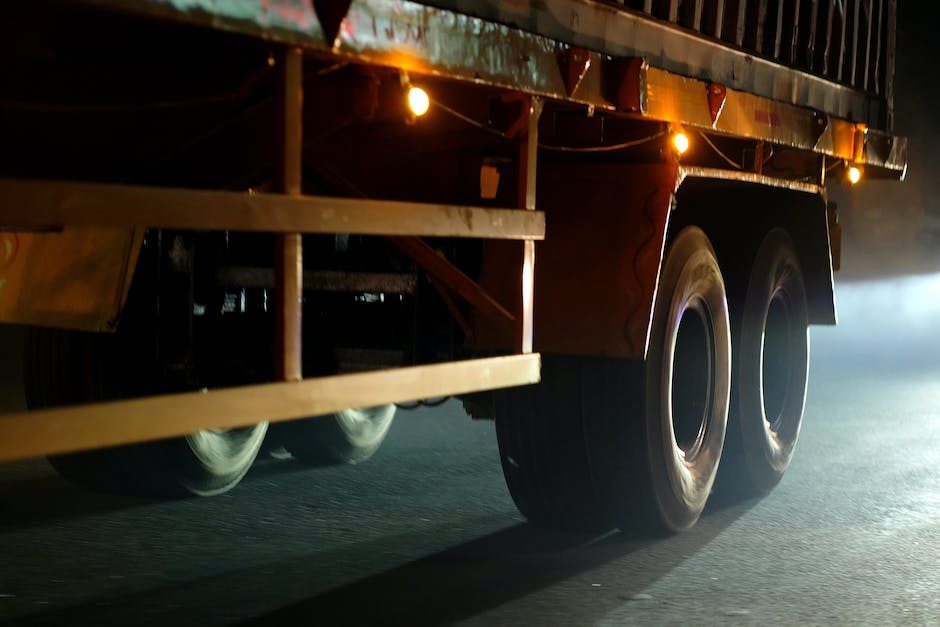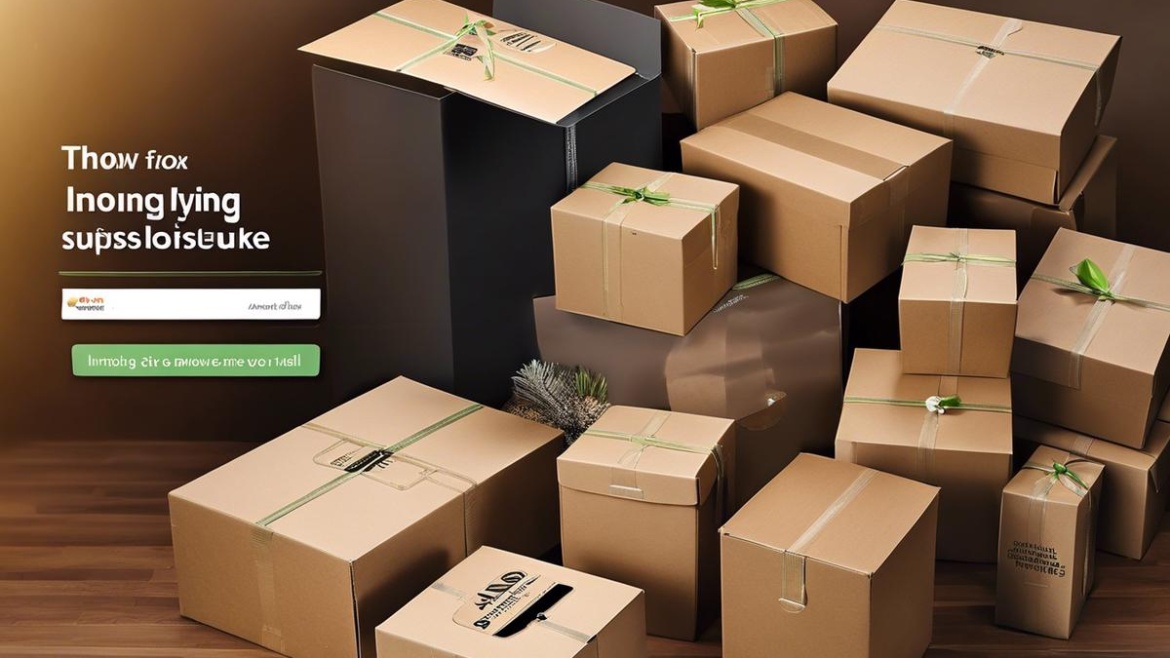In our dynamic world, steeped in a culture of innovation and technology, the moving and packing supplies industry is seeing significant transformations. As a consumer, it’s crucial to stay informed about these developments, understanding not just the products and services currently in the market but the changing landscape of this industry. From exciting new materials being used for packaging boxes to powerful software applications driving logistics, there are many technological advances to keep an eye on. Equally important are the economic trends defining this market space, the future entrepreneurial opportunities it presents, and the networking and partnership potential within this thriving industry. Engaging with this information enables clients or customers to harness these industry advancements, ensuring efficient, effective, and convenient moving experiences.
Innovation in Moving and Packing Supplies
Reimagining the Moving and Packing Industry with Technology
It’s 2021, and the moving and packing supplies industry is in for a major overhaul. Innovation, after all, has always kept the wheels of business turning. And when it comes to this industry, the advent of new technological trends has introduced techniques to automate processes and optimize services.
For starters, let’s solve a pervading problem many face during relocation; packing. Packing is not only time-consuming but also requires meticulous organization to avoid damage to goods. Enter smart packing solutions. These enhancements sport high-tech features to make the process easier and safer. For instance, eco-friendly biodegradable bubble wrap, coupled with advanced materials like inflatable air column packing; these make your valuables virtually “shock proof”. Ever heard of reusable moving bins? These robust plastic bins, made high-quality recyclable materials, are demonstrating a discernable shift from traditional cardboard boxes.
Now, let’s talk about the logistic side. Perhaps there’s no better example of a significant technological leap than the use of artificial intelligence (AI), machine learning (ML), and automation in logistics. Predictive analytics, for one, is helping businesses forecast demand, limit supply chain disruptions, and optimize delivery routes using AI.
Another eye-catching tech trend in the moving sector is the use of robotics. Advanced robotics in warehouses, for example, can easily lift heavy boxes, reducing human effort and the risk of injury. Furthermore, robotic sorting systems have automated moving operations, revolutionizing speed and efficiency.
Switching gears to the customer service aspect, chatbots have provided businesses with the ability to offer real-time assistance, making processes seamless and creating a more personalized experience for clients. However, this is just the tip of the iceberg with more advancements such as augmented reality (AR) and virtual reality (VR) showing promise in interactive and immersive customer service.
As one observes the wave of tech advancements in the moving and packing supply industry, it’s incredibly fascinating to see how these technologies are reshaping the landscapes while offering consumers with impeccable service quality. However, integrating these advancements into the industry’s fabric necessitates the acquisition of sophisticated infrastructure and human capital. Hence, players in this industry who adapt promptly and adeptly to this wave will be well-positioned to differentiate themselves in this fiercely contested market. Keep eyes wide open; the future is accelerating, and the game-changing breakthroughs may be just around the corner.

Economic Analysis of the Moving and Packing Supplies Market
Essential Market Forces Shaping the Moving and Packing Supply Industry
As the winds of evolution sweep across various industries, the moving and packing supply sector is no exception. Driven by the goal to streamline logistics and enhance user experience, the undercurrents of creativity and innovation are evolving this industry. Let’s dive straight into analyzing the key market drivers engineering this change.
First on our list is sustainability. With mounting concerns about the environment, companies are now steering towards green solutions. Having traded single-use boxes for reusable moving bins, many organizations are further exploring eco-friendly packing options and recyclable materials that satisfy a growing market need for sustainability without compromising on durability or cost-effectiveness.
Gradually, we are witnessing how the sharing economy is leaving its mark on the industry. The Uberization of services has caught on, with the advent of on-demand moving services. Customers now have real-time access to moving services at their fingertips, reinforcing immediate response to their precise needs.
There’s also the continued growth of the e-commerce market, which is a substantial propeller for the packing and moving sector. The exponential demand for product delivery, returns, and exchanges necessitates efficient packing solutions and logistics.
Next, we have the cost-cutting potentials of driverless vehicles and drones. While the adoption of these technologies is still nascent, the future promises significant opportunities for businesses to streamline their logistics operations and reduce labor costs dramatically.
The ingenuity of Internet of Things (IoT) in asset tracking is another increasing trend. IoT facilitates real-time tracking of goods during transit and aids in loss prevention by streamlining inventory management.
Lastly, the advent of Blockchain solutions in the logistics sector, although still budding, holds considerable promise. It brings transparency to the supply chain, guaranteeing data integrity and improving security, while curbing the risk of fraud and theft.
It’s an exciting time ahead for the packing and moving industry. With players rapidly responding to these market drivers and leveraging new opportunities, the sector continues to innovate and elevate. It’s clear that those who adapt rapidly and stay abreast of these trends will lead the industry forward. Innovations, after all, have now become not merely a competitive edge, but a business necessity, firming their hold in a highly dynamic marketplace. The industry’s future, indeed, holds immense promise and remarkable transformations.

Emerging Business Opportunities within the Moving and Packing Industry
For business enthusiasts, it is no surprise that the moving and packing supplies industry is undergoing a radical shift with previously unimaginable opportunities ripe for the picking. Diving in deeper, let’s unveil a few emerging business opportunities that are quickly gaining momentum within the realm of moving and packing supplies.
First, consider the rapidly growing trend of sustainability and eco-friendly solutions. With consumer consciousness expanding towards the impacts of their consumption habits on the environment, businesses are marching to the beat of the ‘green’ revolution. Translating this trend into the moving and packing industry, there’s an escalating demand for eco-friendly packing materials. From biodegradable bubble wrap to recyclable packing peanuts, the call for green solutions provides a crucial market gap for entrepreneurs and innovative minds to fill.
The sharing economy’s influence has also permeated the moving and packing supplies industry. Dubbed as “Uber for movers,” platforms are emerging that connect people who need help moving with local truck owners willing to lend a hand. This peer-to-peer service model fosters cost efficiency and flexibility, a clear disruption to traditional moving companies that could potentially lead to an entirely new sub-industry.
In connection to the boom of the e-commerce industry, consumer expectations for quick and efficient delivery services have skyrocketed. This underscores the demand for effective packing and logistics solutions to accommodate surging online sales, opening doors for innovation in things like flat-pack furniture and compact packing designs offering efficient use of space during transit, revolutionizing the way we think about packing.
Advancements in technology have also presented avenues that could redefine the industry landscape. The potential of autonomous vehicles and drones for delivery services promises new levels of efficiency and cost reduction—reducing the need for manpower, minimizing errors, and even providing 24/7 delivery services.
The IoT, on the other hand, has been making significant strides in asset tracking and inventory management. Smart devices can monitor and track items in real-time, significantly reducing misplacement risks and ensuring inventory accuracy. This offers a promising business prospect for those with a technology-leaning bent, given accelerated adoption by businesses in the logistics sector.
Finally, take into account the transformative role of blockchain technology in the sector. By enabling a decentralized, secure way to record and transfer data, blockchain solutions could remarkably increase transparency, improve tracking, mitigate fraud, and streamline audit processes, paving the way for a safer and more efficient moving and packing supplies industry.
Being keenly aware of market dynamics and pursuing continuous innovation are key to tapping into these promising opportunities. These emerging trends underscore the importance of staying agile while taking calculated risks. It is through such ambition and instigation that businesses not only survive but thrive in the face of ever-evolving market landscapes.

Networking and Partnership Opportunities in the Moving and Packing Supplies Industry
Fostering Strategic Relationships: A Game-Changer in the Moving and Packing Business
A visionary isn’t shy about embracing ambitious targets. In the dynamic world of the moving and packing industry, success is hinged not just on staying ahead of the curve but boldly scaling every hurdle that lies in its path.
An inspiration to remember – companies that have embraced the mighty power of relationship-building have been rewarded with unmistakable profitability. The core of these transformative profit models lies in strategic partnerships, extending from complementary businesses to potential customers, and even being in sync with current technological trends.
Picture this – a fruitful alliance with companies in the home furnishings sector. This innovative collaboration unlocks the potential for a start-to-finish service, providing customers with an all-encompassing package. The customer’s items are packed, moved, and the new home is furnished, all guided by the same friendly hand. Potentially a significant brand differentiator, giving a competitive edge in a crowded marketplace.
Additionally, a handshake with real estate agencies can provide a steady flow of customers who are about to move out or move into a new house. Early adapters of such strategic partnerships have reported an increase in customer acquisition and retention rates, boosting overall profits.
Now, imagine this innovative partnership broadening to a global platform. Collaborating with international freight forwarders allows for a seamless transition of goods across borders, expanding the business’s scope while also enhancing the customer experience by simplifying cross-border moves.
The customer-centric approach extends beyond the business sphere, reaching out into the community. Partnering with local charities by providing moving services can build a strong reputation as a socially responsible entity. Not only does this create goodwill, but it also helps foster brand loyalty.
But remember, strategic relationships aren’t just about external partners. Building robust relationships internally is equally critical. It’s about harnessing the combined strength of a motivated workforce, fostering an environment where every member works towards a common goal – the company’s success.
Likewise, investing time in building customer relationships is always profitable. A satisfied customer doesn’t just bring more business – they create more customers. Ensuring every interaction with the customer is nothing short of exceptional can turbocharge loyalty, making the brand their go-to for all their moving and packing needs.
Finally, the digital arena cannot be overlooked in this interconnected world. They don’t call it the world wide web for nothing – the reach is limitless. Cementing relationships with digital technology giants might be the wildcard that changes the game. An example: Integrating services into popular rental apps to provide instant access for people on the move can potentially generate an exponential increase in customer reach.
A strong presence in social media and active participation in online community discussions can tap into the collective zeitgeist. Add to this strategic collaborations with influential bloggers and vloggers, and the brand presence is unstoppable.
In the final analysis, relationships built on trust, mutual respect, and shared benefits are the bedrock for profitability. It’s about tapping into the power of unity, a cogwheel that can propel the moving packing industry into a future that is both profitable and community-driven.

Indeed, as consumers and potential industry participants, understanding the spectrum of innovation disrupting the moving and packaging supplies sector is essential. From cutting edge materials and technology to eco-friendly practices and AI logistics, the landscape is continually evolving. Equally valuable is an understanding of the economic dynamics of this industry, emerging business opportunities, and significance of strategic networking and partnerships. As we navigate the complexities of the moving and packaging supplies industry, let us stay informed and embrace these changes—not just for an optimized moving experience but also to contribute to this evolving industry’s growth and success.

